

For some time, the camouflage net began to be associated...
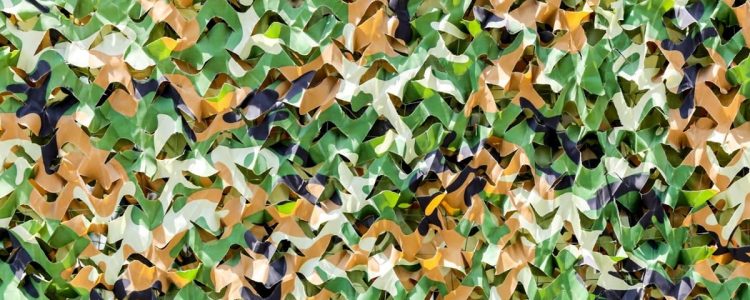
For some time, the camouflage net began to be associated not only with military operations, but also with peaceful life. It began to be used for decoration, for the manufacture of canopies, fences, etc. Unfortunately, after the start of a full-scale invasion of Russia into the territory of Ukraine, the camouflage net became very popular for its intended purpose, to hide equipment, supplies and buildings from the enemy. In this article, you will learn what a camouflage net is, how it can be used, what it is made of, and how to make it yourself.
A camouflage net is a specialized textile covering for camouflage on the ground. This camouflage tool has a wide range of applications. Such networks are used to disguise technical equipment, weapons, military equipment and artificial structures as terrain.
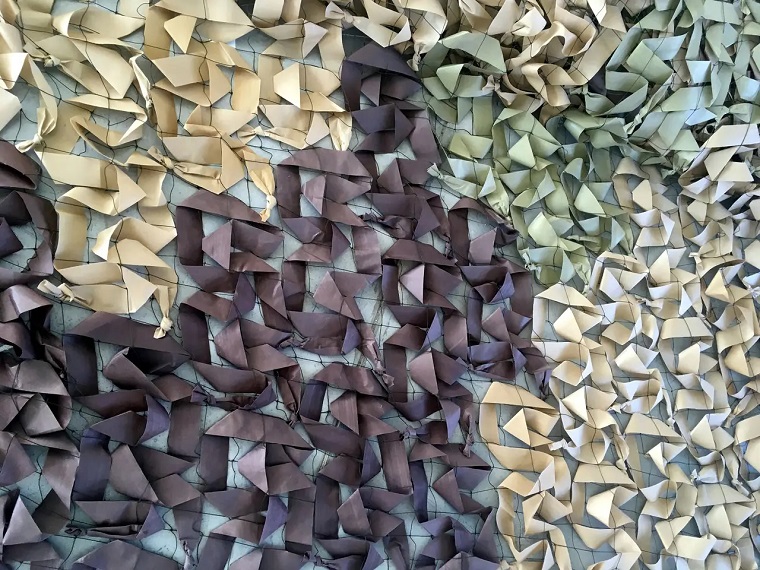
The camouflage net has the form of a mesh base with patterned fastening of patches of fabrics, pieces of film or other materials. Depending on the need, the material imitates sand, green spaces, bushes and trees.
The camouflage net is able to withstand severe mechanical loads. Some types of camouflage nets can also provide protection even from radar.
As mentioned earlier, in addition to military needs, camouflage nets are used much more often in peacetime.
Camouflage materials are in demand among hunters. A variety of camouflage nets for hunting allows you to use them at any time of the year and on any terrain, you just need to choose the right color and texture. When assembled, the mesh fits in a backpack, it is convenient to mount it with racks or simply scatter it on bushes and low trees. Hiding the car from animals will also work.
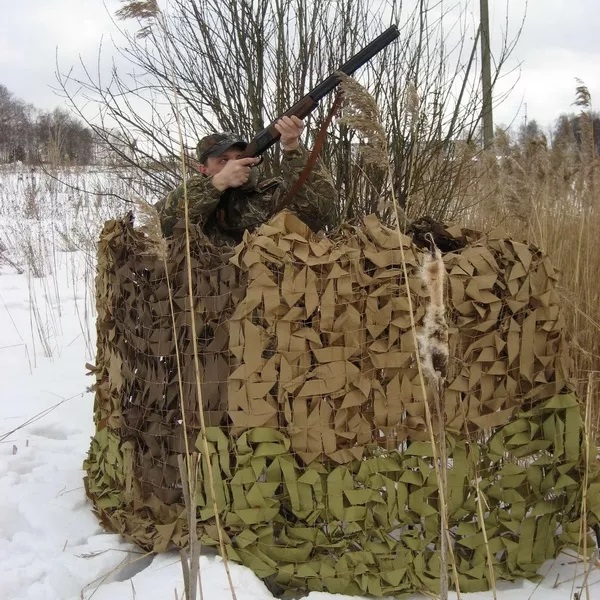
A universal camouflage net is used for arranging summer cottages. It will protect fences, arbors, greenhouses from weather conditions and prying eyes. In addition, disguise has a decorative function.
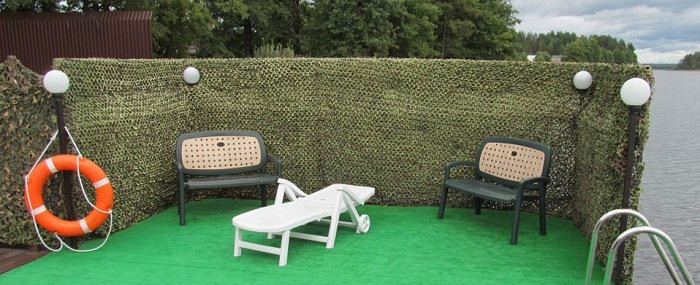
Welded mesh or netting may not look very attractive and need decoration. The camouflage net for the fence will allow you to change the appearance of the fence. There are several options:
As a design element, a camouflage facade mesh is often used, which looks like a continuous fabric of dense weaving. There is a drawing on top of it.
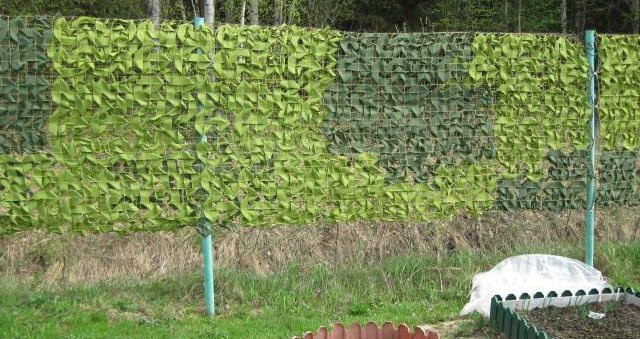
The combination of decorative and protective functions allows the use of a camouflage net for a canopy. It will provide protection from ultraviolet radiation. In country houses you can see cars protected from the sun and precipitation by such structures.
Open greenhouses need protection from the sun, at the same time, plantings should not be left completely in the shade. The problem is solved simply: it is enough to stretch the masking net with a shading degree of about 60% to get the best lighting option for garden crops.
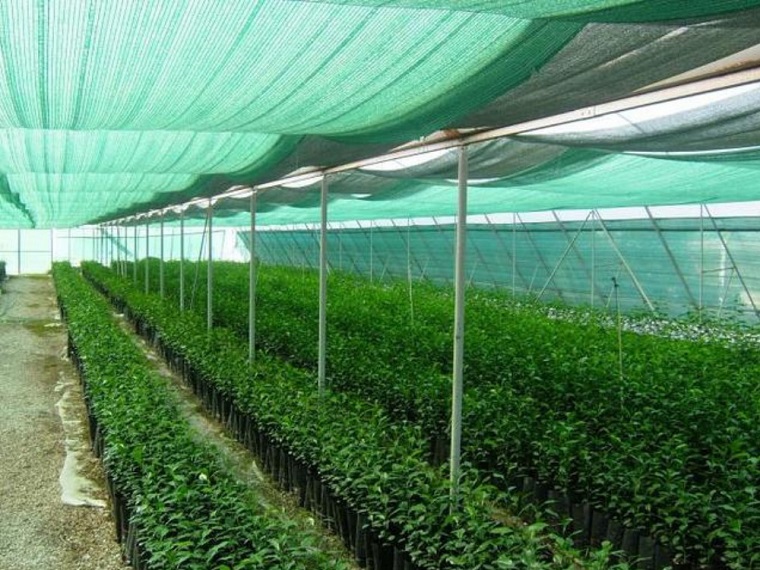
Due to the variety of types of canvas, the grid is used for interior decoration. Camouflage elements can be seen in clubs, theme shops, restaurants, camp sites and paintball fields, in photo studios. Decor is used not only in interiors, but also for the exterior design of buildings.
Camouflage nets are made of polymer tapes or textiles with special impregnation. Their basis is a nylon cord, to the cells of which a camouflage material is attached.
There are nets without a frame, made of interwoven ribbons or perforated fabric. They are cheaper but less durable.
There are three types of nets, differing in the way they are made:
This is a type of mesh in which strips of camouflage fabric are stretched through the cells of the mesh base. Such a network is quite simple to make with your own hands.
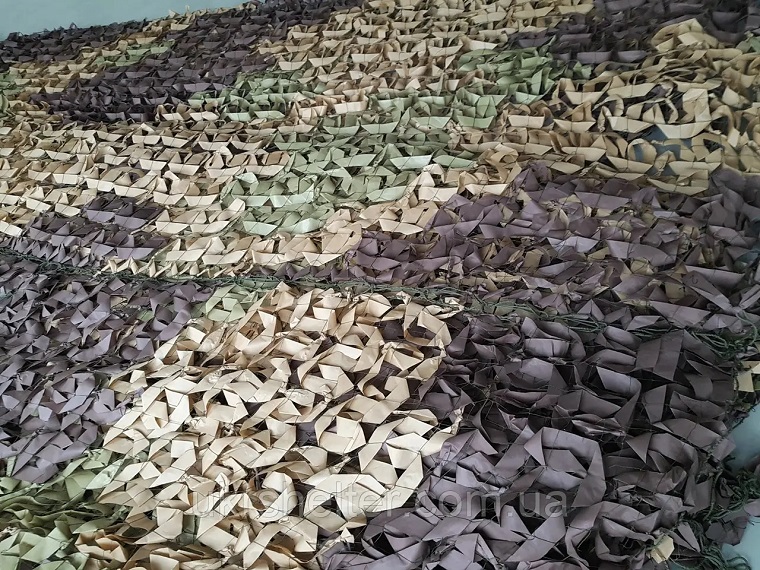
The fabric is cut in waves and pulled through a mesh base, which is made in the form of small squares.
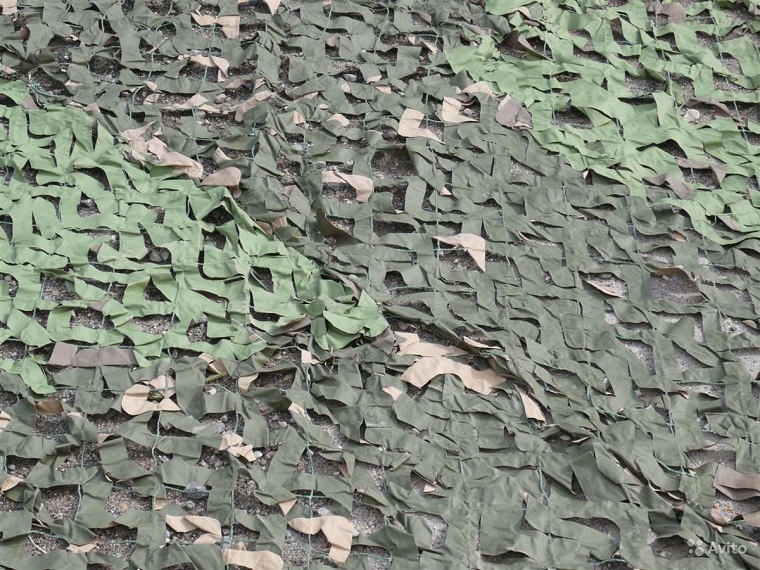
The most popular type of camouflage net. For its execution, horizontal slots are made on the textile fabric, it is this network that gives the maximum shadow and a high level of strength of the final product.
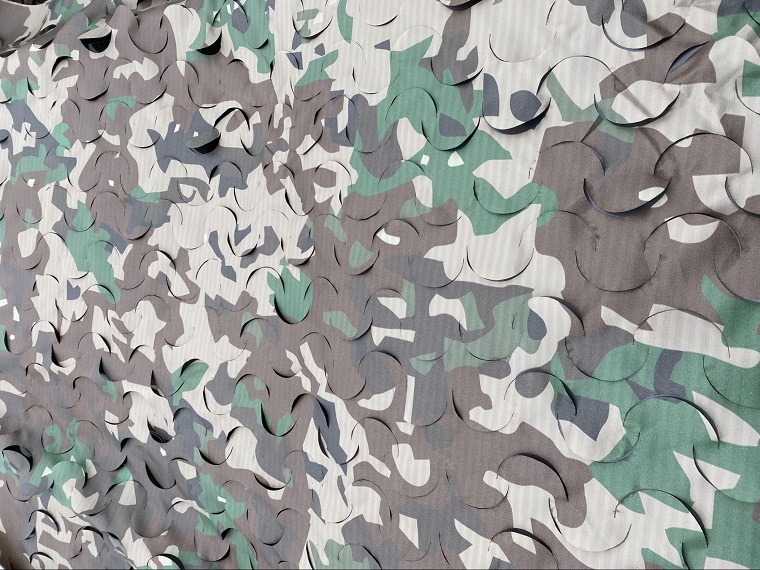
The color of the camouflage net depends on the textile or polymer material that is attached to the net. The modern choice of color schemes of camouflage material is presented quite widely. Of the most popular color schemes, you can find camouflage nets of the “NATO” category – this coating is made in green colors; the “Forest” color scheme uses the palette of the autumn landscape – red and brown shades; a view called “Urban” – uses a gray-blue color scheme.
In addition, the colors of the camouflage net take into account not only the color scheme of the area, but also the unique pattern and structure of the natural landscape. Modern meshes convey not only the color solution, but also create a three-dimensional view of objects, visually breaking up the outlines of the masked object or person.
According to the light transmission capacity, camouflage nets are divided into three categories.
All high-quality camouflage nets have common characteristics:
There are other advantages of using a protective camouflage net:
The properties of any (decorative and military) camouflage net remain unchanged even with strong temperature changes.
The main disadvantages of the material include the following nuances.
A camouflage net is quite easy to do with your own hands. Many volunteer organizations and ordinary caring Ukrainians made camouflage nets at home, at school or at work. Mutual assistance of Ukrainian citizens greatly helped the defenders in the defense of cities and villages.
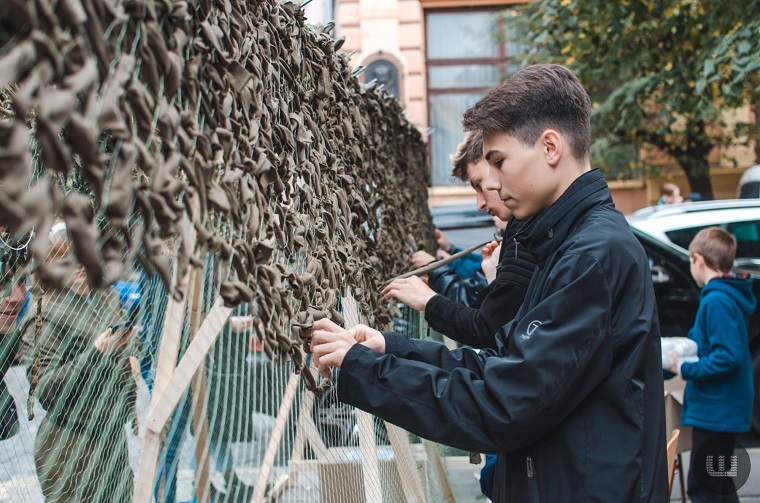
The components of the camouflage net are the mesh base and fabric:
Firstly, the parameters of the frame (base) should be determined: the dimensions of the cells, the width and length of the web, the diameter of the cord. To answer these questions, you need to know for what purposes the finished product will be used: for camouflage in hunting, for decorating fences, arbors, awnings, decoration, etc. If the mesh is intended solely for masking, it is necessary to determine the object of masking (3 x 2.5 meters will be enough for a person, about 6 x 3 meters for a car).
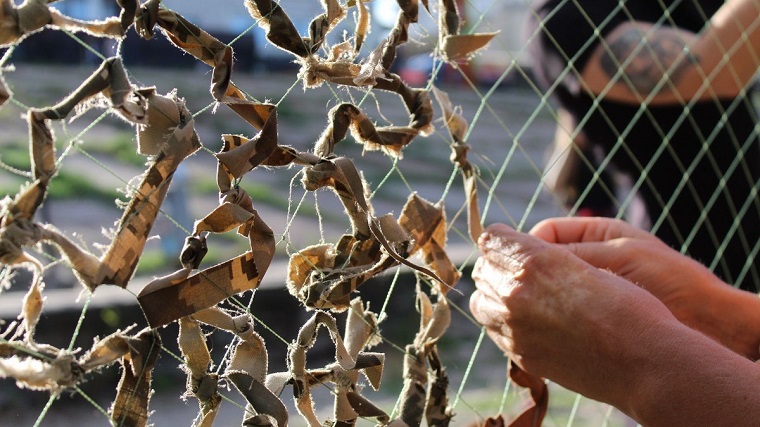
You have two options:
Thus, the preferred option is to purchase a finished mesh. It is recommended to buy a product made of nylon cord, which is durable and does not tangle.
We are preparing material for camouflage strips. Ideally, you should try to use only synthetics (artificial silk, nylon or nylon cut fabrics, etc.) – since these materials are the lightest, and also do not absorb odors and moisture. It is desirable to select a color in yellowish, brown, gray, swamp-green shades – otherwise you will have to color yourself.
Various materials can be used for external design:
In addition, tarpaulin tapes are sometimes used. Using strips from plastic bottles is not the best solution, since such a canvas will be very noisy, although moisture resistant.
Burlap, yarn, threads get wet in the rain, their weight increases, which should also be taken into account.
Therefore, the best choice is synthetic fabric: nylon etc.
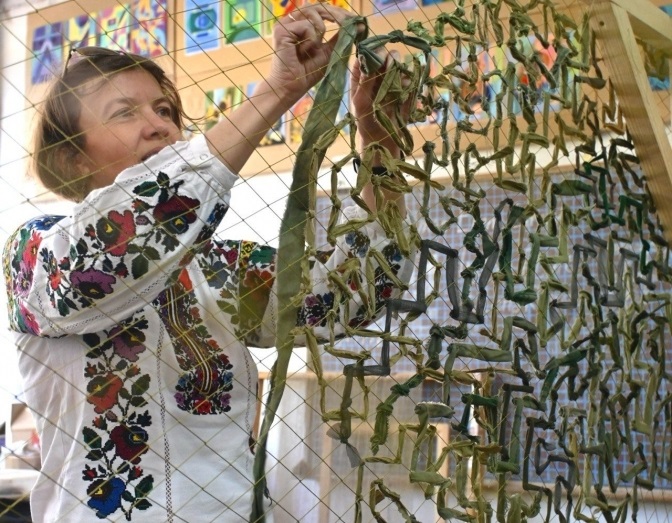
Fastening is carried out in different ways. Tapes of the selected material are fixed to the frame by weaving, i.e. patches are attached to the base and intertwined between the cells of the grid.
The first method is used in most cases, as it saves the most time.
An important task is the correct weaving of ribbons, threads or other forms of materials.
The frame is stretched and attached, for example, to a fence or located between posts driven into the ground. Ribbons, the size of which varies, for example 5×50 cm, are cut on one side by 1/3 of the length. For the uncut edge, the flaps are fastened. It is possible to make several cuts across the width. Thus, textiles acquire a natural texture inherent in plants. The ribbons should be positioned until the required density is obtained.
Special attention should be paid to fixing leaves and grass, which are recommended to be used in conjunction with tow or burlap, which have a similar color.
As a frame, it is necessary to choose grids with a small cell size. Fastening must be carried out in a chaotic or staggered manner. First, bundles of burlap are woven, then grass and twigs, and lastly, leaves are attached.